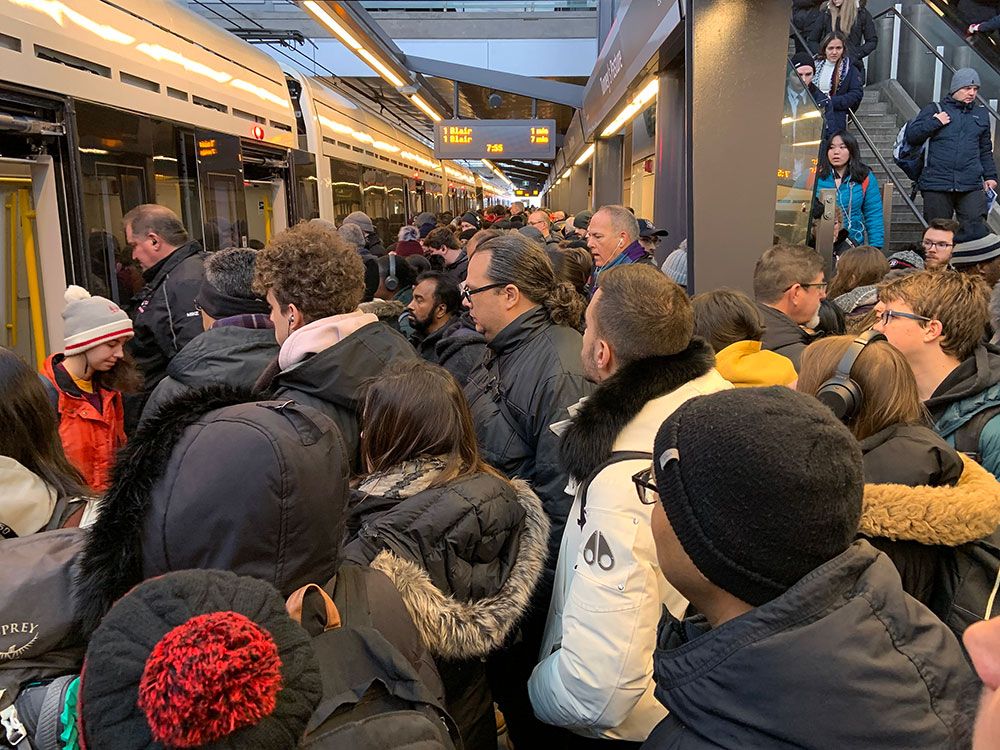Canada is caught in a “population trap” for the first time in modern history and needs to limit immigration to escape it, say economists with the National Bank of Canada.
A population trap, according to Oxford dictionary, is when the population is growing so fast that all available savings are needed to maintain the existing capital–labour ratio, making any increase in living standards impossible.
Article content It’s historically been seen in emerging economies, and escape requires either an increase in savings, a cut in population growth, or both.
National Bank’s report joins the growing chorus of concern that the influx of newcomers over the past two years, many of whom are temporary workers or students, is too much for the economy to handle. Others caution there could be economic repercussions if Ottawa cuts off the flow too quickly.
Canada’s population grew by 1.2 million in 2023, a “staggering” amount when you consider that the next biggest surge was when Newfoundland joined the nation in 1949, says the report by National Bank economists Stéfane Marion and Alexandra Ducharme.
From a global perspective Canada’s population growth of 3.2 per cent last year was five times higher than the average of Organisation for Economic Co-operation and Development nations.
“We currently lack the infrastructure and capital stock in this country to adequately absorb current population growth and improve our standard of living,” said the economists.
No where is this strain more evident than in housing, they say.
National says the shortfall has reached a record of only one housing start for every 4.2 people entering the working-age population. The historical average is 1.8.
Government programs are underway to address this, but to meet demand and reduce housing inflation, Canada would need to double its housing construction capacity to about 700,000 starts a year, “an unattainable goal,” according to the economists.
“More worrisome is the fact that the decline is not simply due to a lack of housing infrastructure,” they said.
Excessive population growth is also impeding economic well-being, they argue. A fact they say is underscored by real gross domestic product growth per capita stagnating for six years in a row.
Capital stock, the physical and financial resources used to create value in an economy, has failed to keep up with population growth. Private non-residential capital stock has been falling for seven years, National says, and is now is at the same level as in 2012, while it is at a record high in the United States.
According to National calculations, capital stock per capita plummeted to about 1.5 per cent in 2023, compared with a high of almost 4.5 per cent in the 1960s.
Article content “This means that our population is growing so fast that we do not have enough savings to stabilize our capital-labour ratio and achieve an increase in GDP per capita,” the economists said. “Simply put, Canada is in a population trap for the first time in modern history.”
If Canada is to improve its productivity, policy makers must set population targets against the constraint of our capital stock, they argue.
“At this point, we believe that our country’s annual total population growth should not exceed 300,000 to 500,000 if we are to escape the population trap.”
Average asking rents in Canada hit a record high of $2,178 in December 2023, up 8.6 per cent from the year before. Over the past two years, rents have increased by 22 per cent or an average of $390 a month, said Urbanation in its January Rentals.ca report.
One-bedroom apartment rents increased the most, rising 12.7 per cent over the past year to reach an average of $1,932.
Article content Alberta saw the biggest hikes with rents shooting up 15.6 per cent to reach an average of $1,691. In 2022, rents in this western city rose almost 17 per cent.
But British Columbia kept the distinction of Canada’s most expensive market for apartments. The average rent here was $2,500 in December, even after slipping 1.4 per cent lower in 2023. The year before B.C. apartment rents soared 18.5 per cent.



Same old conversation … pointing the problem at common people with little to no money at the bottom and saying that they are all to blame for the countries problems.
The problem are the rich idiots at the top who are hording wealth and blocking the ability of those at the bottom from gaining any measure of wealth or ability to take care of themselves. The rich siphon wealth from the poor and then blame the poor for being poor and that someone should do something about it.
Do something about wealth inequity in this country and it will solve a host of social problems we are facing. In order to fix the country, you have to help the people who exist in the country and are the basis for making the economy possible. Trying to fix the economy first while never dealing with poverty and completely ignoring runaway capitalism is like trying to change a blown tire while the car is still moving and blaming the passengers for the problem.
Preach!